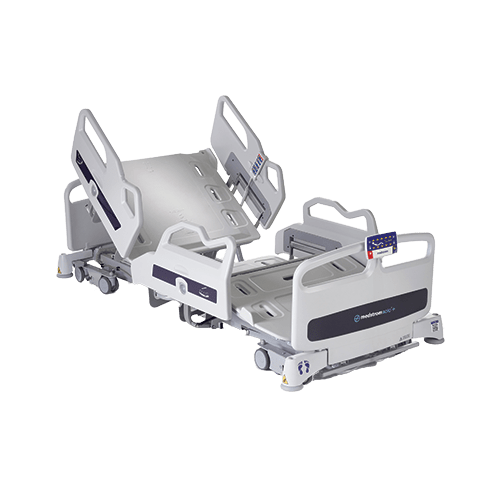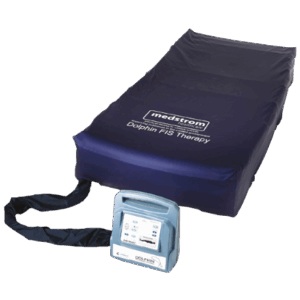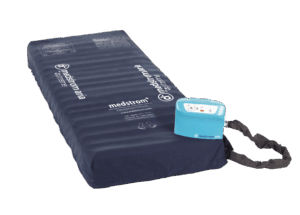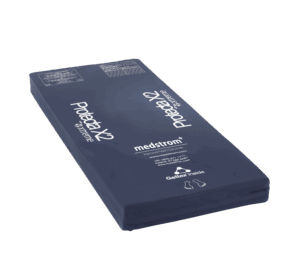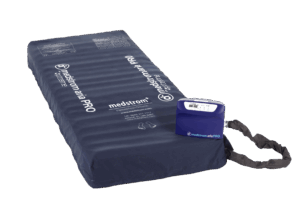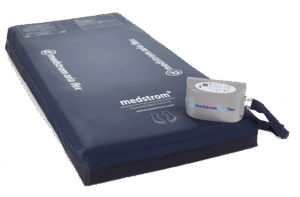
Pressure Ulcer Prevention and Management: Everything You Need to Know
There is a lot to consider when it comes to pressure ulcer prevention and treatment. Here, we’ll unpack everything you need to know about pressure ulcers, including what they are, and the steps to take when it comes to pressure ulcer prevention and management.
What is a Pressure Ulcer?
Pressure ulcers are recognised as a significant challenge across the healthcare sector, from the community to the acute care setting. Sometimes referred to as ‘pressure injuries’, ‘pressure sores’ and historically ‘bed sores’ or ‘decubitus ulcers’, the varying terminology can cause confusion.
Certain countries or regions predominantly use the term ‘pressure injuries’; whereas, within the UK, ‘pressure ulcer’ is recognised as the most widely used term and is consistent with the EPUAP definitions.1 In fact, NHS Improvement details the definition of a pressure ulcer as:
“A pressure ulcer is localised damage to the skin and/or underlying tissue, usually over bony prominences (or related to medical or other device), resulting from sustained pressure (including pressure associated with shear). The damage can be present as intact skin or an open ulcer and may be painful”.1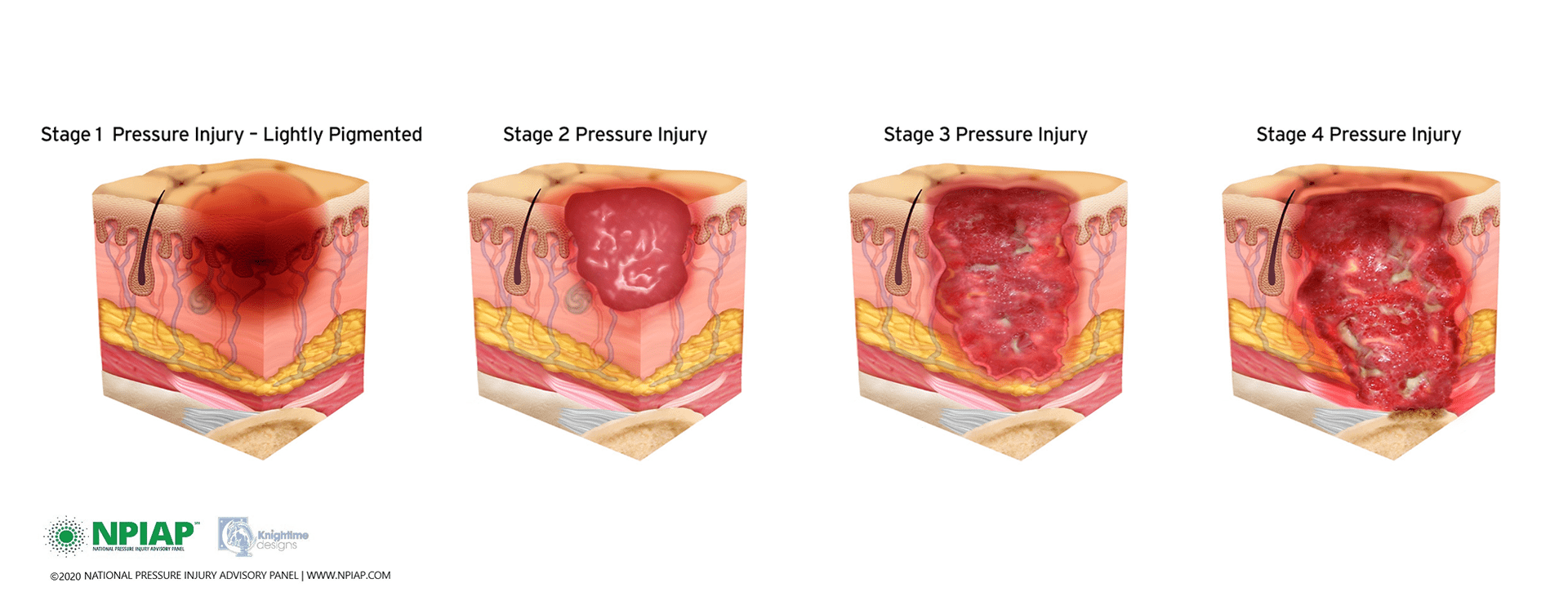
Click here to find out more about the pressure ulcer definition.
Pressure Ulcer Prevention and Management
When it comes to pressure ulcer prevention and management, it’s important to ensure that there is a level of early intervention involved. It’s therefore important to make sure you’re taking all of the necessary steps to control and avoid their development entirely.
It’s recommended to have a structured risk assessment carried out for your patient within six hours after admission in order to identify the possibility of pressure ulcer development.2,3
When it comes to pressure ulcer prevention and management, it’s important to consider the risk factors and ensure that there is a level of clinical judgement involved. Making intuitive and situational decisions about patient treatment is imperative, as the risk of pressure ulcers may differ for all patients depending on the person and their history since admission. Early intervention can be what ensures patients have access to the necessary equipment needed to avoid the risks of pressure ulcer development.
So what are the right steps to take when it comes to pressure ulcer prevention? Using tools such as the aSSKINg model have been incredibly helpful for healthcare staff in understanding a consistent approach to pressure ulcer prevention.3 This addresses the following areas or actions for consideration:
a – Assess risk
S – Skin assessment and skin care
S – Surface selection
K – Keep moving
I – Incontinence & increased moisture
N – Nutrition & hydration
g – Giving information
Among these, “Keep moving” or mobilisation is key to making sure your patient isn’t spending prolonged amounts of time putting pressure on areas prone to developing pressure ulcers. Developing a schedule for the patient that works to increase activity can be a helpful tool to do this. Find out how best to go about increasing mobilisation for your patient here.
Download Our Pressure Ulcer Guide
Pressure Ulcers and Quality of Life
While it’s important to be aware of the steps to take when it comes to pressure ulcer prevention and treatment, it’s also necessary to consider the experience and well-being of the patient.
Dealing with pressure ulcers can hugely affect the patient’s quality of life, presenting new challenges and difficulties in how they go about their day-to-day life. Click Here to find out more about how pressure ulcers can affect mental health and wellbeing.
Here, TVN specialist and lecturer Alison Parnham speaks about the consequences of living with pressure ulcers.
Watch our Q+A webinar about ‘The Human Cost of Pressure Ulcers’ here, or read about the whole webinar series here.
Alternatively, watch more webinar highlights on our video page here.
Pressure Ulcer Treatment
Once a pressure ulcer has begun to develop, there are different things to consider when it comes to pressure ulcer treatment. Early intervention steps may not have been enough to prevent the pressure ulcer from developing, so it’s important to be aware of taking the necessary course of action.
Take a look at how the early adoption of Dolphin Therapy has improved patient outcomes based on pressure ulcer prevention vs treatment here:
Pressure ulcers can be incredibly painful and can lead to serious complications such as infections and even amputations. Therefore, it is essential to know how to treat them effectively.
The first step in treating pressure ulcers is to relieve the pressure on the affected area. This can be achieved by repositioning the patient frequently, using specialised mattresses and cushions, and educating the patient on the importance of changing positions regularly. It is also important to ensure that the patient’s skin is kept clean and dry to prevent further irritation and damage.
With proper care and attention, patients can make a full recovery. By relieving pressure and providing wound care, medical professionals can help patients manage their condition and prevent further complications. It is essential to develop a comprehensive treatment plan that meets the patient’s individual needs and ensures the best possible outcome.
Surface technology has been found to have beneficial effects in pressure ulcer treatment. Read about the use of therapeutic surface technology and its effects on pressure ulcer prevention and management here.
Fluid immersion simulation therapy is widely known when it comes to pressure ulcer prevention and treatment, here we’ve outlined the clinical benefits of this type of surface technology:
Download Our Pressure Ulcer Guide
Pressure Area Care Products
Here at Medstrom, we provide a variety of different mattresses that play a big role in pressure ulcer prevention and management.
Dolphin Therapy is an innovative solution for individuals with pressure ulcers, equipped with advanced technology that utilises fluid immersion simulation therapy, enabling full immersion and envelopment.
Alternatively, the Medstrom Aria utilises air immersion technology with stability built into the immersive cells to help provide comfort and stability and enable patient independence.
The Protecta 2 is another mattress we provide that utilises a foam mattress solution that works to enhance pressure redistribution. It is also made with durable materials that can significantly extend product life cycle.
These are only a selection of the products Medstrom provides to help with pressure ulcer prevention and treatment. Click here to explore our full range of pressure area care products.
At Medstrom, we have seen outstanding results for over 3,000 highly complex patients who were nursed on a Dolphin Therapy support surface. Find out how Dolphin Therapy plays a part in pressure ulcer prevention and treatment here:
To watch similar videos, visit our video page here.
Read our three-part series on pressure ulcer prevention and management:
Part 1: Carrying out a risk assessment
Part 2: Ensuring early intervention
Part 3: Early Mobilisation
References
- NHS Improvements. Pressure ulcer: revised definition and measurements, summary, and recommendations. June 2018
- Pressure Ulcers, Quality Standard. NICE Guidance (2015)
- EPUAP: Treatment of Pressure Ulcers: Quick Reference Guide (2016)
- NHS Improvements. Pressure Ulcer Core Curriculum [Curriculum Outline Framework]. June 2018





